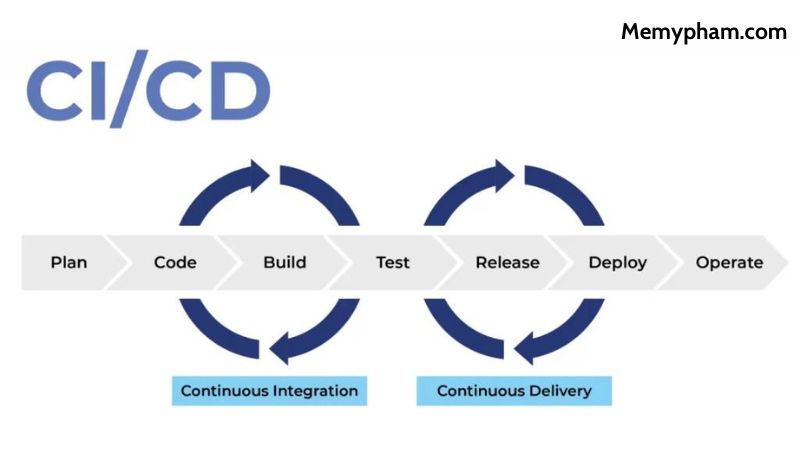In the vast digital landscape of today, software design stands as the cornerstone of technological innovation. Whether it’s crafting intricate web applications or streamlining business processes through custom solutions, the process of designing software is as much an art form as it is a technical endeavor. In this comprehensive guide, Memypham will delve into the intricacies of software design, exploring each step of the journey and uncovering the key principles that drive success.
How to Design Software
Understanding the Foundation: Identifying Requirements
At the heart of every successful software project lies a thorough understanding of user needs and business objectives. Before embarking on the journey of software design, it’s crucial to conduct a meticulous analysis of requirements. Through interviews, surveys, and market research, gather insights into the challenges faced by users and the goals they aim to achieve. This initial step lays the groundwork for the entire design process, shaping the direction and scope of the project.
Setting the Course: Defining Goals

With requirements in hand, the next step is to define clear objectives for the software. What problem does it aim to solve? How will its success be measured? By articulating specific goals, you provide a roadmap for the design process, guiding decision-making and prioritization. Whether it’s enhancing efficiency, improving user experience, or driving revenue growth, each goal serves as a beacon, guiding the design process towards its intended destination.
Charting the Path: Planning
A well-defined plan is essential for navigating the complexities of software design. From timelines to resources, every aspect of the project must be carefully considered. Develop a project plan that outlines tasks, milestones, and responsibilities, ensuring alignment among team members and stakeholders. Additionally, factor in considerations such as budget, technology stack, and development methodology, laying the groundwork for a smooth and efficient execution.
Building the Framework: Designing Architecture
The architecture of a software system forms its structural foundation, defining the arrangement of its components and the flow of data and control. How to design software effectively involves creating a robust architecture that is scalable, maintainable, and adaptable to change. Choose appropriate design patterns and architectural styles, considering factors such as modularity, separation of concerns, and extensibility. By establishing a solid architectural framework, you lay the groundwork for a flexible and resilient software solution.

Crafting the Interface: User Interface (UI) Design
The user interface serves as the gateway to the software, shaping the interaction between users and the underlying system. How to design software that delights users involves creating an intuitive and visually appealing UI. Pay attention to user experience (UX) principles, ensuring that interactions are seamless and intuitive. Conduct usability testing to gather feedback and iterate on the design, refining it to meet the needs and preferences of users. By prioritizing UI design, you create a compelling and engaging user experience.
Structuring the Data: Database Design
The database forms the backbone of many software systems, serving as the repository for storing and retrieving data. How to design software that efficiently manages data involves careful consideration of database design principles. Design the database schema to ensure data integrity, normalization, and optimal performance. Consider factors such as scalability, security, and the specific requirements of the application. By architecting a well-structured database, you lay the groundwork for efficient data management and retrieval.
Bringing it to Life: Implementation
With the design in place, it’s time to bring the software to life through implementation. Write code according to the design specifications, following coding standards and best practices. Collaborate closely with team members to ensure consistency and cohesion across the codebase. Pay attention to readability, maintainability, and scalability, laying the groundwork for future iterations and enhancements. By focusing on quality craftsmanship during implementation, you create a solid foundation for the software’s success.
Ensuring Quality: Testing
Testing is a critical aspect of software design, ensuring that the final product meets quality standards and fulfills its intended purpose. How to design software that is robust and reliable involves conducting various types of testing, including unit tests, integration tests, and acceptance tests. Identify and fix bugs and issues promptly, ensuring a smooth and seamless user experience. Adopt testing methodologies such as test-driven development (TDD) to foster a culture of quality and continuous improvement.
Launching into the World: Deployment
The deployment phase marks the culmination of the design process, as the software is released into the production environment. How to design software that is ready for deployment involves careful planning and execution. Deploy the software with precision, ensuring proper configuration and setup. Consider automation and continuous integration/continuous deployment (CI/CD) pipelines to streamline the deployment process and minimize downtime. By orchestrating a seamless deployment, you pave the way for a successful launch and adoption of the software.

Nurturing Growth: Maintenance and Support
Even after deployment, the journey of software design continues, as maintenance and support play a crucial role in ensuring its long-term success. Monitor performance, address user feedback, and release updates as needed to keep the software relevant and competitive. Provide ongoing support to users, resolving issues and providing guidance as needed. By nurturing the growth of the software through proactive maintenance and support, you ensure its continued relevance and impact in the ever-evolving digital landscape.
Sum Up
In conclusion, how to design software effectively requires a holistic approach that encompasses the entire software development lifecycle. By understanding user needs, defining clear goals, and following a structured design process, you can create software that is not only functional and efficient but also delightful and impactful. With each step of the journey, from planning to deployment to maintenance, strive for excellence, and innovation, creating software that stands the test of time.
